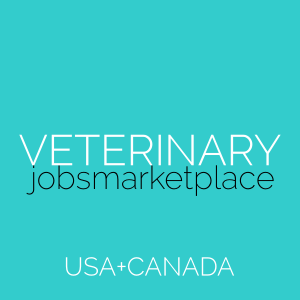
🤗 Thriving Teams Share These 3 Traits
If your veterinary team feels like they are working hard but barely holding it together some days, you’re not alone. Whether you’re leading one clinic or coordinating across several, the pressure is real: packed schedules, emotional caseloads, limited breathing room. In all of that, it’s easy to lose momentum, morale, and the sense of what makes the work feel worth it.
The best practices lay practical foundations that help their teams stay steady, connected, and committed through the toughest weeks. They focus on belonging, pride, and recovery. Applying these principles together with consistent leadership can create an environment where people want to show up, support each other, and do work they’re proud of. Discover how simple, real-world actions can strengthen culture across every clinic, every shift, every team…
 Find Your New Team Member
Find Your New Team Member
Belonging
When people feel like they belong, they bring more of themselves to the work. They speak up sooner, help each other faster, and recover more easily when things go sideways. Belonging doesn’t come from perks, job titles, or icebreakers. It’s built through trust, inclusion, and small, human signals that say, “You’re part of this, and you matter.”
In veterinary teams, where the emotional load runs high and the margin for error runs thin, belonging offers a kind of invisible safety net. It gives people permission to admit when they’re unsure, to ask for help, and to offer it without hesitation.
How the best teams create belonging:
- Consistent personal check-ins
Not performance reviews. Just real conversations. Managers, leads, and peers who regularly ask, “How are you doing?” and mean it, create an environment where people feel seen, not just scheduled. - Everyone in the loop
When decisions, changes, and context flow freely across roles and locations, people feel trusted. Whether it’s a daily huddle, a weekly video update, or a pinned message in a team chat, open communication builds connection. - Shared ownership, not top-down direction
Involve the team in shaping processes and solving problems. Invite input, credit contributions, and listen with the intent to apply what you hear. - Deliberate welcome moments
When someone new joins, how they are greeted matters. Simple things like a teammate intro, a shared lunch, or a welcome note on the whiteboard set the tone quickly. Belonging starts on day one. - Safe space for differences
People feel they belong when they don’t have to edit who they are. That includes personal quirks, cultural backgrounds, or professional experience levels. Respect across difference signals safety.
What belonging makes possible
- More confident communication, especially when it matters most
- Stronger collaboration across roles and locations
- A team that looks out for each other, not just for tasks
When belonging is strong, people feel part of something, not just present. That’s the foundation everything else is built on.
When our team feels like they’re in it together, everything changes. People jump in to help without being asked, speak up earlier, and bounce back faster after tough days. It’s not about team-building days. It’s about how we treat each other in the middle of a busy Tuesday – Dr. Maya L, Practice Owner, Los Angeles, USA
Pride
Pride isn’t loud. It’s not ego or performance. It’s the quiet confidence people feel when they know the work they do matters, that it’s seen, and that it reflects the standards they hold for themselves and for the team around them.
In veterinary practice, pride shows up in the way people prepare a theatre, manage a consult, support a colleague, or explain a difficult decision to a client. It’s personal, and it’s contagious. People who feel proud of what they do lift the people around them.
How the best teams build pride:
- Connect effort to impact
Make the link between daily work and outcomes clear. Not just “thank you,” but “what you did helped that patient go home today.” - Recognise contributions, not just results
Celebrate persistence, care, creativity, and problem-solving. Recognition that’s specific, sincere, and shared publicly reinforces the right kind of pride. - Share wins across the group
Whether it’s a patient success story, a clinic milestone, or a moment of kindness, make it visible across all locations. Shared pride strengthens collective identity. - Let people lead in their lane
Give team members space to take ownership of protocols, training, or client experience. Pride grows when people shape how things are done, not just follow instructions. - Back values with action
If excellence, compassion, or integrity are part of your stated values, they have to be visible in decisions, not just posters. Pride builds when the organisation acts like it says it will.
What pride makes possible
- Higher standards, owned and upheld by the team
- Proactive leadership at every level
- A workplace people talk about with confidence, not caution
When pride is strong, people bring more care, more consistency, and more energy — because the work reflects who they are.
When someone feels proud of their work, they protect it. They want the standard to stay high, because they see it as a reflection of themselves and the whole team. That’s where sustainable excellence starts – Dr. Helena M, Medical Director, London, UK
Recovery
Veterinary work takes energy. Not just physical effort, but emotional presence, patience, and resilience. Recovery is what makes that sustainable. It is not a bonus or a luxury. It is what allows people to keep caring, day after day, without burning out.
Recovery does not mean stepping away for weeks at a time. It is built into the small moments: the chance to breathe between cases, the ability to share a tough shift, the permission to stop for a proper break without guilt.
How the best teams support recovery:
- Protect time to reset
Even in a busy day, five minutes to eat, stretch, or just breathe can reset focus and reduce emotional load. Teams that normalise short breaks hold together longer. - Debrief when things get heavy
After a complex case, a difficult loss, or a challenging client interaction, give space for a quick check-in. Acknowledging the weight of the work makes it easier to carry. - Model boundaries from the top
When leaders step away on time, take days off, and talk openly about managing their own workload, it gives the rest of the team permission to do the same. - Build access to real support
Whether it is peer-to-peer chats, local mental health providers, or formal resources, make sure people know where to turn and that no one has to manage everything alone. - Share the load fairly
High-performing teams watch each other’s limits. That might mean rotating heavy shifts, sharing emotional labour, or simply noticing when someone needs to be stepped in for.
What recovery makes possible
- A team that stays kind, even under pressure
- Less burnout and more stability across clinics
- Energy that can stretch across a career, not just a season
When recovery is part of the culture, people do not have to choose between caring and coping. They get to do both.
The teams that last are not the ones that run the hardest. They are the ones that know when to pause, when to share the load, and when to back each other. Recovery is not what you do after the work. It is what keeps the work going – Dr. James T, Multi-Practice Owner, Sydney, Australia
Closing Thoughts…
Belonging, pride, and recovery are not lofty ideals. They are practical foundations that strong veterinary teams are built on. Implementation is not complex, but it does require consistency, attention, and a willingness to lead with intent.
Start with one. Keep building incrementally and add the others when the team is ready. The cornerstones you create will last, and they will help your team thrive.
About Veterinary Jobs Marketplace…
We connect veterinary talent with the best veterinary jobs. Explore our Job Campaigns for GP Veterinarians, Emergency Vets, Veterinary Nurses, Technicians, and more, each enriched with video insights. Find new team members using our unique Reach, Frequency, and Story strategy, now including One-to-One Outreach.
For Job Seekers: Discover your ideal veterinary jobs in cities across the USA and Canada. Register for custom Job Alerts, bringing the latest opportunities directly to your Inbox.
For Employers: Register to reach skilled veterinary professionals for your practice. From GP Veterinarians to Emergency Vets, our Job Campaigns help you find the perfect team members.
Worldwide Audience: Expand your reach internationally to the UK, Europe, Australia, New Zealand, and Asia. Our global reach will connect you to our global veterinary community.

